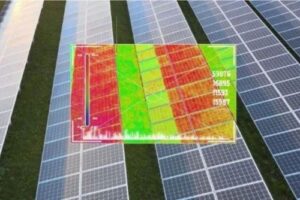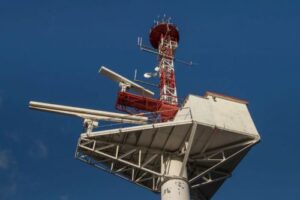Introduction
The demand for renewable energy has skyrocketed in the past decade, and solar energy is leading the charge. With the expansion of large-scale solar farms and rooftop installations, one challenge that operators face is maintaining panel efficiency. Even a minor fault in a single solar panel can significantly reduce the energy output of the entire system. Traditionally, inspections required physical labor, ladders, safety gear, and hours of manual checks. Not only was this method slow, but it also carried safety risks.
Enter drone cameras—a revolutionary technology changing the way solar inspections are done. Equipped with high-resolution cameras and thermal imaging sensors, drones provide fast, accurate, and safe solar panel inspections. In this blog, we’ll explore how drone cameras work in solar inspection, their benefits, challenges, and why they are considered a game changer in renewable energy.
What Are Drone Cameras for Solar Inspection?
Drone cameras are unmanned aerial vehicles (UAVs) fitted with specialized equipment such as:
-
High-Resolution RGB Cameras: Capture detailed aerial images of solar panels.
-
Thermal Imaging Cameras: Detect temperature variations that signal faults.
-
Multispectral Sensors: Provide advanced insights into panel performance.
These drones fly autonomously or with manual control over solar installations, collecting critical data within minutes. The collected data is then processed through AI-based software to highlight issues like hotspots, cracks, shading, or debris.
Why Traditional Inspection Methods Fall Short
Before drone technology, solar inspections were conducted using handheld devices and manual observation. This approach has several drawbacks:
-
Time-consuming – Large solar farms could take weeks to inspect.
-
Human error – Small cracks or hotspots are often missed.
-
Safety risks – Inspectors work at heights or around live electrical systems.
-
Limited reporting – Manual inspections provide less detailed documentation.
Drone cameras eliminate these limitations by providing faster, safer, and more accurate inspections.
Benefits of Drone Cameras in Solar Industry
a) Faster Inspections
What used to take days can now be completed in a few hours. Drones cover large areas quickly, scanning thousands of panels in a single flight.
b) High Accuracy
Thermal sensors detect temperature differences invisible to the naked eye. This ensures accurate identification of hotspots, faulty cells, or wiring issues.
c) Cost Savings
Although there is an initial investment in drone technology, the long-term savings are huge. Reduced labor, lower downtime, and fewer repairs mean greater ROI for solar companies.
d) Improved Safety
Drone inspections minimize the need for workers to climb on rooftops or walk through vast solar farms in harsh conditions, reducing accident risks.
e) Scalability
From residential rooftop systems to massive solar farms, drone cameras can scale inspections as per project size.
Common Issues Detected by Drone Cameras
Drone cameras can identify a range of solar panel issues that affect performance:
-
Hotspots – Overheated areas caused by faulty cells or shading.
-
Micro-Cracks – Tiny cracks that reduce power output over time.
-
Soiling – Dust, dirt, or bird droppings blocking sunlight.
-
Loose Connections – Poor electrical wiring causing energy loss.
-
Degradation – Panels naturally losing efficiency with age.
By detecting these early, companies can take corrective measures before efficiency drops further.
Case Study: Drone Cameras in Action
Consider a solar farm with 50,000 panels. Manual inspection could take weeks and involve dozens of workers. With drone cameras, the same inspection can be done in a day, producing a detailed report with GPS-tagged problem areas. This reduces downtime and ensures optimal energy generation.
Challenges in Drone-Based Solar Inspections
Despite their advantages, drone cameras also come with some challenges:
-
Weather Dependency: Strong winds, rain, or fog affect flights.
-
Regulations: Some regions require government approvals for commercial drone use.
-
Initial Cost: Advanced drones with thermal imaging can be expensive.
-
Data Management: Large-scale inspections produce massive amounts of data that require processing and storage.
Future of Drone Cameras in Solar Industry
The future looks bright for drone-based solar inspections:
-
AI Integration: Automated analysis of inspection data.
-
Predictive Maintenance: Drones will predict faults before they occur.
-
Autonomous Flights: Drones will soon inspect sites without human intervention.
-
IoT Integration: Real-time monitoring integrated into smart solar grids.
Conclusion
Drone cameras are revolutionizing solar inspections by making them faster, safer, and more accurate. They save costs, reduce risks, and improve energy output for both small-scale and large-scale solar projects. As the world shifts towards renewable energy, drone technology will play a crucial role in ensuring that solar energy remains efficient and reliable.
If you’re in the solar industry, adopting drone cameras is not just an upgrade—it’s a necessity.



